Accton Technology ML60PRS4601 Metrolinq 60GHz Module User Manual 60G OK
Accton Technology Corp Metrolinq 60GHz Module 60G OK
User Manual
Brandname:IgniteNet
60GHz Module
Model name: RDO-60-FB-USBB-18BF
User’s Manual
TableofContents
1.Introduction.....................................................................................................................3
1.1 Overview......................................................................................................................................................3
1.2 DefinitionsandAcronyms............................................................................................................................3
1.3 Background..................................................................................................................................................3
2.FunctionalDescription......................................................................................................4
2.1 EnableTestModeonWindowsHostPC......................................................................................................4
2.1.1 DisableDriverSigning..............................................................................................................................4
2.1.2 AddingTestCertificate............................................................................................................................5
2.2 InstallingtheHostandNetworkdriver........................................................................................................6
2.2.1 InstallingdriveronWindows7................................................................................................................6
2.3 Loadingimageontoboards..........................................................................................................................7
2.3.1 Loadingimageontodevicefortheveryfirsttime...................................................................................7
2.3.2 Loadingimageontodevicethatalreadyhaveapriorimage...................................................................7
2.4 CreatingaNetworkwithtwoPRS4601s.......................................................................................................7
2.4.1 ConfiguringPCP/STAModes....................................................................................................................7
2.4.2 Creatinganetworkprofile.......................................................................................................................8
2.4.3 Startingandconnectingtocreatednetwork.........................................................................................10
2.4.4 SettingstaticIPaddressesforhostmachines.......................................................................................11
3.Appendix........................................................................................................................12
3.1 AppendixA‐EnablingDriverSigning.........................................................................................................12
3.2 AppendixB–SettingupTeraTerm.............................................................................................................12
1.Introduction
ThisdocumentwillexplainthestepsrequiredinordertocreateanetworkconnectionusingthePRS4601,including
driverinstallation,firmwareupgrades,andnetworkconfiguration.
1.1 Overview
ProductSpecificationCreation
OperatingFrequency:57–64GHz
ChannelBandwidthSetting:2160MHz
Channel1:Fc=58.32GHz
Channel2:Fc=60.48GHz
Channel3:Fc=62.64GHz
TXPower:30.86dBmnominalatRFICoutput
TXEVM:‐11dBforMCS6/‐12dBforMCS7/‐13dBforMCS8
RXSensitivity:‐63dBmforMCS6/‐62dBmforMCS7/‐61dBmforMCS8
HighestRawDataRate:1‐streamMCS8(2310Mbps@QPSK)
Throughput:1500Mbpstypicalwithappropriatetestsetup
Interface:USB3.0miniconnector
PowerConsumption:4Watttypical
OperatingTemperature:‐40to+70°C
1.2DefinitionsandAcronyms
ADC Analog‐to‐digitalconverter
AFE AnalogFrontEnd
ARC ARC625DCPU
DWC DesignWareCore
GPIO
LMAC
GeneralPurposeIO
LowerMAC
PIO ProgrammableIO
PWM PulseWidthModulator
SSI SynchronousSerialInterface
UART
UMAC
UniversalAsynchronousReceiver/Transmitter
UpperMAC
1.3Background
ThePRS4601MACisdesignedaroundapairofARC625CPUs,referredtoasUpperMAC(UMAC)andLowerMA
C
(LMAC).TheseCPUsutilizetwoindependentbusesforperipheralconnection:
1.AnAHBbuswhichconnectstoanAHB‐Litefabricandprovidesaccesstosharedperipheralsandmemory
2.AdedicatedARCPeripheralBus
TheUMACandLMACCPUsshareaccesstothefollowingperipherals:
IPC:Providesatomicinter‐processorcommunicationwithbothlocksandevents
MACTimer:Providesapreciseover‐the‐airMACtime(attheMAC_CLKand1MHz)
AFETest,ConfigurationandControl:
oTheUMAChasaccesstoAFETestandConfiguration
oTheLMAChasaccesstoAFEControlfunctions
TheUMACCPUhasdedicatedaccesstothefollowingperipherals:
HostInterfaces
oUSB3.0(and2.0)Configuration
Otherperipherals
oUMACDMA:toassistinmovingdatabetweensharedmemoryandDCCM
oUART:fortestanddebug
oSSI:forbootandconfigurationdata(viaserialflashorEEPROM)
oARCTimer:generalpurposetimer(MQX)
oInterruptcontrol
oGPIO:forbootconfiguration(straps)andstatus/control/debug
oPWM:pulsewidthmodulatorforLEDsandotherstatus/debug
oTopLevelChipControl:Reset,PowerDown,etc.
oGeneralPurposeADC(notfunctionalinPRS4601)
oAprogrammableIOblockthatallowsmostIOpinstobeconfiguredasGPIO
TheLMACCPUhasdedicatedaccesstothefollowingperipherals:
MAC/PHYInterfaceOtherperipherals
oTXDMA:UsedtosenddatafromsharedMACmemorytotheMAC/PHY
oRXDMA:UsedtoreceivedatafromMAC/PHYtosharedMACmemory
oUART:fortestanddebug
oSSI:forradioconfiguration,controlandstatus
oARCTimer:generalpurposetimer(MQX)
oInterruptcontrol
oGPIO:forradiocontrolandstatus,andgeneralstatus/debug
oPWM:pulsewidthmodulatorforstatus/debug
oCalibrationTimer:toallowprecisefrequencylockingofthecrystaloscillatorandtoallowing
lockingofMACtimetoanexternalclock
oAprogrammableIOblockthatallowsmostIOpinstobeconfiguredasGPIO
2.FunctionalDescription
2.1EnableTestModeonWindowsHostPC
BeforeinstallingdriversforthePRS4601,onemustconfiguretheHosttobeabletoinstallatestdriver
2.1.1DisableDriverSigning
1)Runcommandpromptasadministrator(entercmd.exeinsearchfield,rightclickonit)
2)Enterthefollowingtwolines:
a)bcdedit.exe–setloadoptionsDDISABLE_INTEGRITY_CHECKS
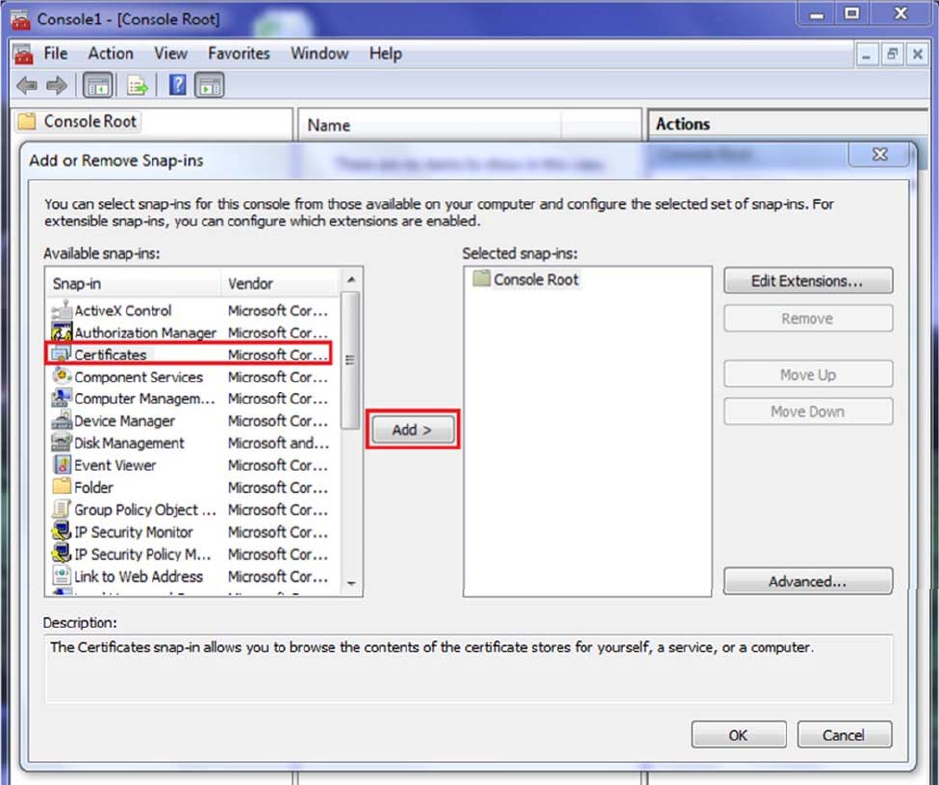
b)bcdedit.exe‐setTESTSIGNINGON
2.1.2AddingTestCertificate
1)OpenMicrosoftManagementConsole‐Typemmcinsearchandpressenter
2)File‐>Add/RemoveSnap‐in
3)SelectCertificatesandpresstheAdd>button
4)SelecttheComputerAccountradiobutton
5)ChooseLocalcomputerthenpresstheFinishButton
6)ImporttheprswigigusbcertificationtoTrustedRootandTrustedPublishers
a)Thecertificatecanbefoundin<build>\host\win\WinRelease_wlan\
b)Toimportthecertificate,right‐clickTrustedRootorTrustedPublishersandthenselectAllTasks‐>Import.
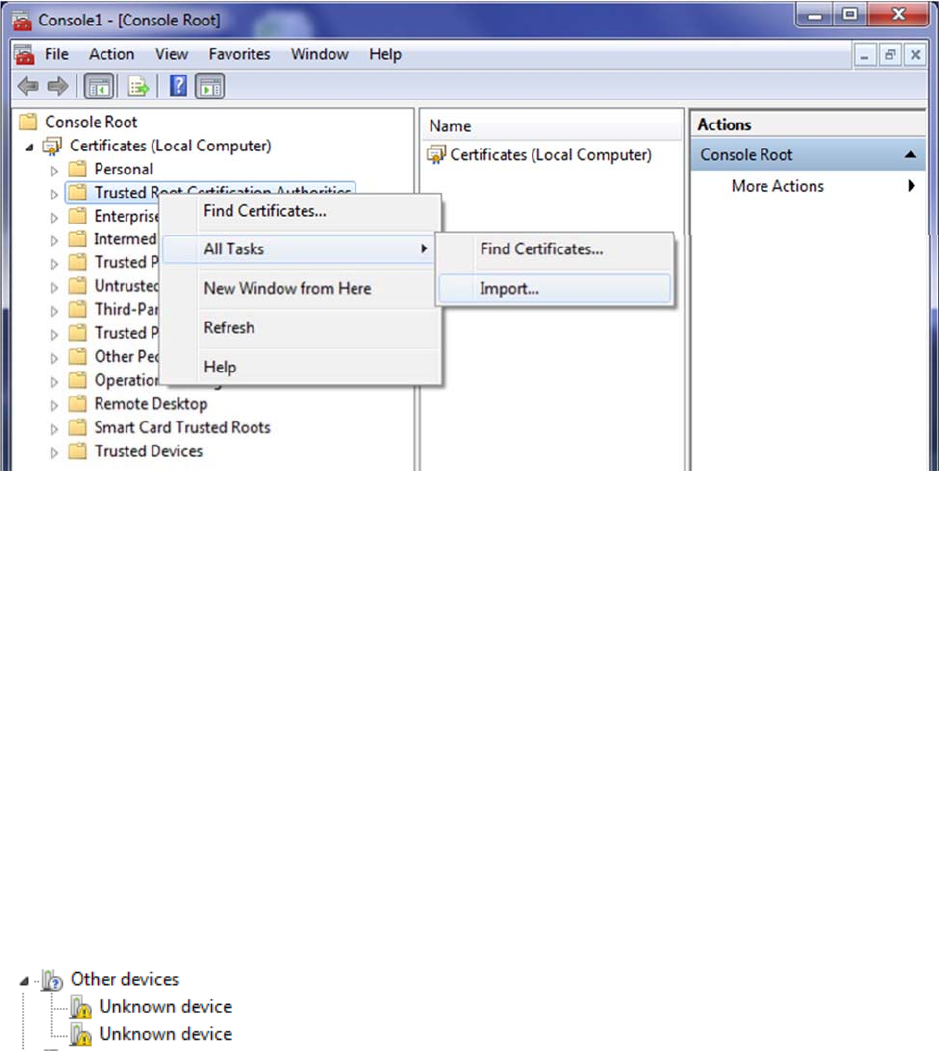
2.2InstallingtheHostandNetworkdriver
Inordertocreateanetwork,thePRS4601boardsmustbeconnectedtoahostcomputerwhichhasthe
appropriatedevicedriversinstalled.Atthetimeofwritingthisdocument,onlyhostcomputersrunningthe
Windows7operatingsystemwassupported.
2.2.1InstallingdriveronWindows7
Inordertoinstallthehostdrivers,ausermusthavethePRS4601devicewithavalidfirmwareimageprogramm
ed.
Thestepsforinstallingthehostdriveraredetailedbelow:
1.PluginthePRS4601devicetoaUSB3portonthehostcomputer.Immediatelythisprovidespowertothe
deviceandaflashinggreenstatusLEDindicatesthatthedeviceisreadyforuse.
2.NavigatetotheDeviceManageronthehostcomputer(RightclickonMyComputerandselectProperties.
AlinktotheDeviceManagercanbefoundintheleftpanelintheopenedwindow)
3.Twounknowndeviceshouldnowbevisibleunder“Otherdevices”(seeFigurebelow)
Figure2‐1:MissingdriverforpluggedinPRS4601device
4.RightclickonthefirstunknowndeviceandselectUpdateDriverSoftware
5.Select“Browsemycomputerfordriversoftware”thenbrowsetotheappropriatelocationofthedrivers.
6.SelectNexttostarttheinstallation
7.Aftertheinstallationcompletes,clicktheClosebutton
8.Repeatsteps4to7fortheremainingunknowndevice.
2.3Loadingimageontoboards
2.3.1Loadingimageontodevicefortheveryfirsttime
Thebootloaderisusedtoprogramtheboardsfortheveryfirsttime.ThePRS4601enablescommunicationwith
thebootloaderviatheUSBinterfaceassumingtheSerialdriverwasinstalled(seeSection2.2.1).TeraTerm(ora
ny otherterminalapplicationthatemulatescommunicationwithaCDCdevice)canbeusedtoverifycommunicatio
ntothebootloader.Theusercanpressedthe“Enter”keyorenterthe“version”commandandviewtheresponse.
Beforeprogrammingtheimage,theusermustdecidewhethertoloadtheimageto:
1.RAMinwhichcasetheprogramwouldbelostafterresettingthedevice
2.Flashinwhichcasetheprogramwouldbepersistedevenafterresettingthedevice
Note:IfthestatusLEDonPRS4601isblinkingagreenpattern,youcanskipthisstepandgotosection2.3.2.When
installingthefirmwareforthefirsttimethebootloadermustberunning–thisisindicatedwithaflashingyellow
LED.
Thedownload_elf.exeutilityisusedtoloadtheimagetoRAMonly.Thisutilitymustbeexecutedfromthesame
directorythathasthefirmwareimages.Note:Pleaseensuretorunthisutilityasanadministratorbyrightclicking
onthedownload_elf.exefileandselectingoptionto“RunasAdministrator”.
Thedownload_flash.exeutilityisusedtoloadtheimagetoFlash.Similarly,thisutilitymustbeexecutedfromthe
samedirectorythathasthefirmwareimages.Note:Pleaseensuretorunthisutilityasanadministratorbyright
clickingonthedownload_flash.exefileandselectingoptionto“RunasAdministrator”.
Note:Forthemajorityofuserscenarios,option#2wouldgenerallybepreferred.
2.3.2Loadingimageontodevicethatalreadyhaveapriorimage
Theimageontheboardcanbeupgradedordowngradedbydoubleclickingtheprs_flash_bin.batscriptprovided
withthefirmwareimage.Theboardmustberesetforthenewimagetotakeeffect.
2.4CreatingaNetworkwithtwoPRS4601s
WhenattemptingtocreateanetworkbetweentwoPRS4601s(wiredorwireless),theusermaychooseto
configureaspecificnodeasthenetworkcoordinator(moreappropriatelyknownasthePCPinan802.11adPBS
Snetwork)whileconfiguringtheothernodeasaStation(STA).Alternately,ausermayalsooptforhavingtheP
CPandSTAselectionsbenegotiatedallowingthedevicestochooseamongthemselvestheroleeachnodewillp
lay.
2.4.1ConfiguringPCP/STAModes
InordertosetthenodetoPCPorSTAmode,wewillneedtousetheDeviceManager.
TheDeviceManagercanbefoundunderControlPanel‐>DeviceManager.
Findthecorrectnetworkadapter,rightclick‐>properties.
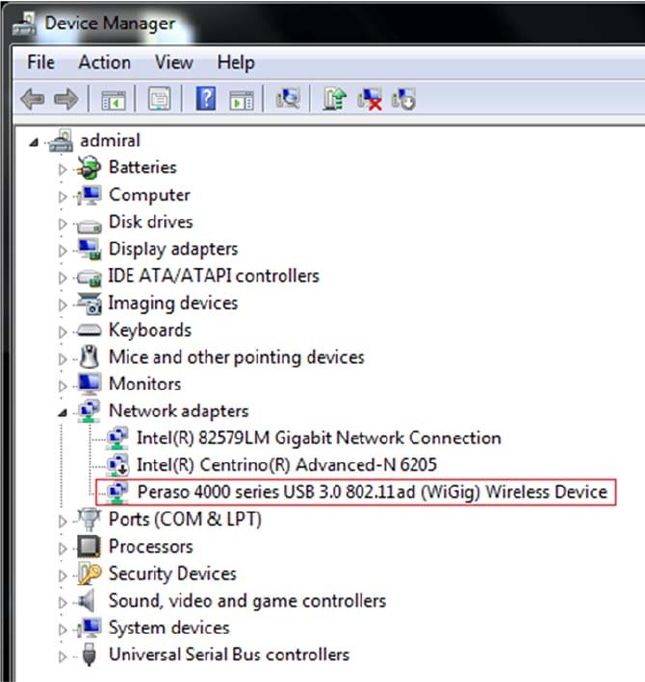
Figure2‐2:Devicemanager
Then,gototheadvancedtabandset:
AMSDU‐>ON
DeviceMode‐>PCPorSTA
Repeatthesestepsforbothnodes,onewithDeviceModesettoPCP,theotherwithDeviceModesettoSTA.
2.4.2Creatinganetworkprofile
Afterconfiguringdiscoverymodeonbothhostcomputers,thenextstepwillbetocreateaprofileforthenetwo
rk.
ThiswillneedtobedoneonthenodesettoPCPmode.Thestepsfordoingthisisoutlinedbelow.
1.OpentheNetworkandSharingCenterfromControlPanel
2.Clickonthe“Managewirelessnetwork”linkontheleftpanelforthewindow
3.ClickAddthenchoose“Createanadhocnetwork”.
4.ChoosetheNextbuttonafterreadingthedescriptionforsettingupawirelessadhocnetwork
5.Fillouttheformwhichisusedtoprovidedetailsaboutnetwork(seeFigurebelow)
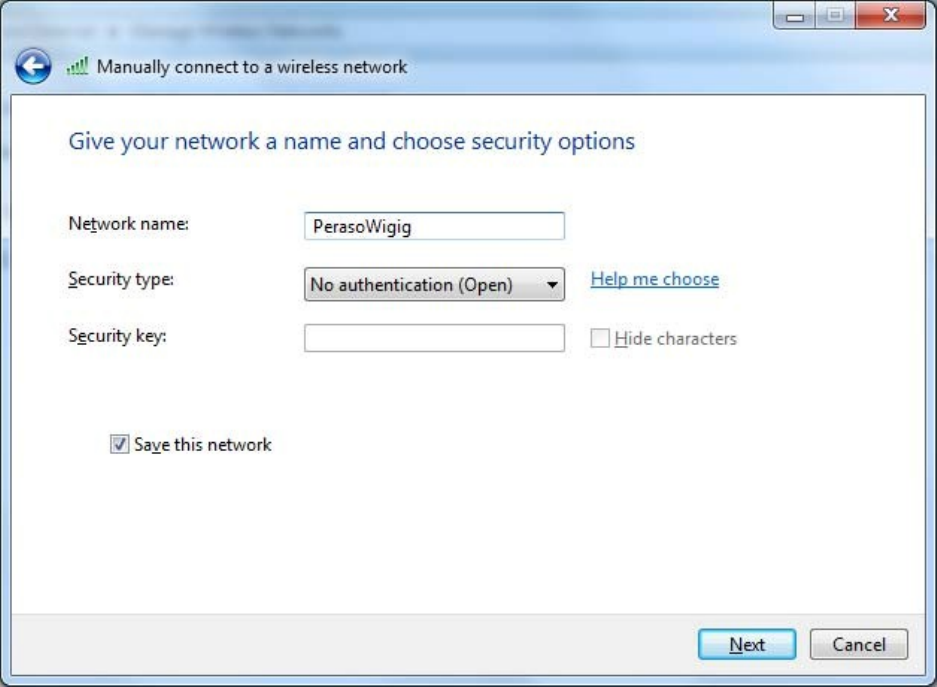
Figure2‐3:Creatinganetworkprofile
6.ClicktheNextbuttonafterfillingform
7.Clicktheclosebuttonafternetworkisreadyforuse(seeFigurebelow)
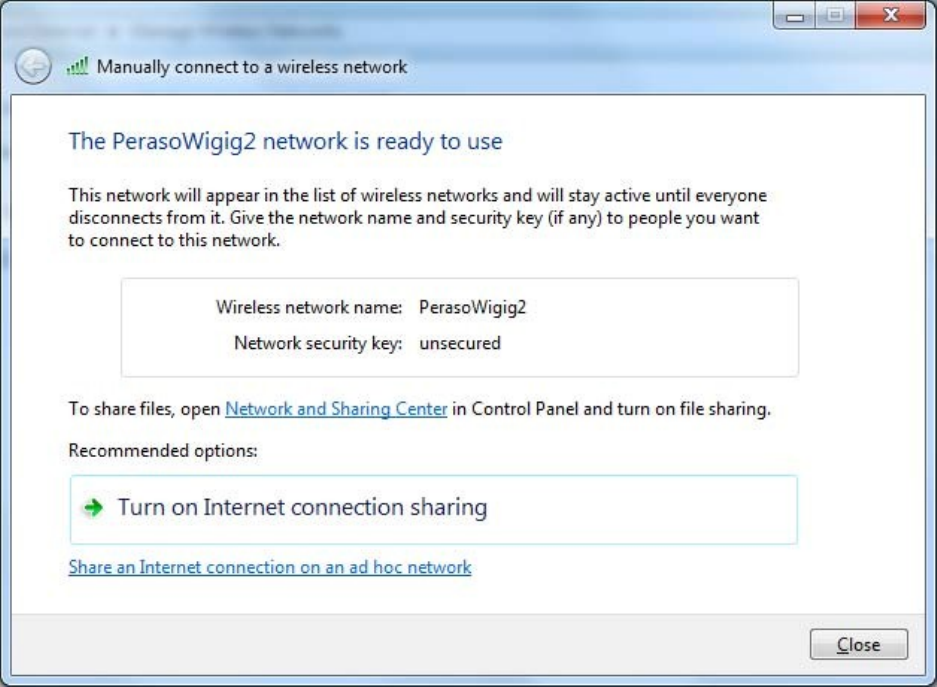
Figure3‐2‐4:Networkprofilesuccessfullycreate
2.4.3Startingandconnectingtocreatednetwork
ThenetworkmustbestartedfromthenodethatissettoPCP.FromthetrayiconsclickontheiconforWireless
Connection.Thisshoulddisplaythenetworkthatwascreatedabove.Doubleclickonthenetworkname(orRight
ClickandchooseConnect)tostartthenetwork.Oncestartedyoushouldnoticethestatuschangeto“Waitingfor
users”(seeFigurebelow)
TheusercanalsoknowthatthenetworkhasbeenstartedbylookingonthePRS4601device.Therewillbeafast
blinkingpatternofthegreenTXLEDindicatingthatframes(inthiscasebeacons)arebeingtransmittedbythe
device.
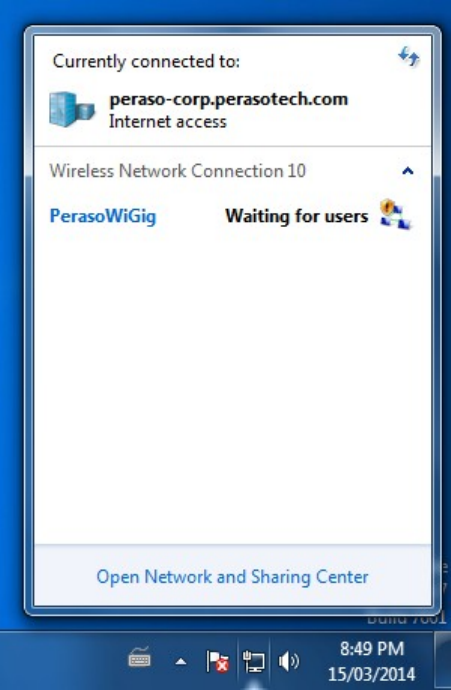
Figure3‐2‐5:StatusafterstartingPCP
FromthehostcomputerconfiguredtobeaSTA,thenetworkshouldnowbevisiblewhentheuserclicksonthe
wirelessconnectiontrayicon.Theusercanthendoubleclickonthenetworktheywishtoconnectto.Note:this
stepisthesameasconnectingtoanywirelessnetwork.
Ifconnectionwassuccessful,thestatuswillbeupdatedtoConnectedonbothhostcomputers.
2.4.4SettingstaticIPaddressesforhostmachines
WhileeachnodeonthenetworkwillbegivenanIPaddressautomatically,staticIPaddressescanbeconfigured
foreachhost.Thisisnotrequiredfortraffictobesentoverthenetwork.SettingstaticIPaddressescanbedone
fromtheAdapterpropertiesforthedevice(sameasanyothernetworkdevice)andselectingtheInternetProtocol
Version4(TCP/IPv4)properties.EnsurethatdifferentIPaddressesareusedforbothdevices.Figure#belowshows
theconfiguringofstaticaddressesforoneofthehostmachines
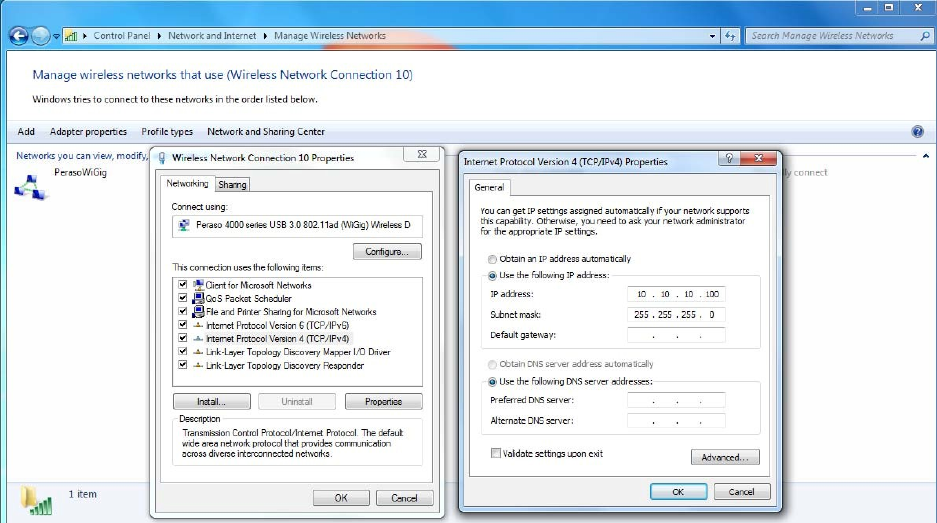
Figure3‐2‐6:ConfiguringstaticIPaddresses
3.Appendix
3.1AppendixA‐ EnablingDriverSigning
Ifevertheuserwantstostopusingacomputerasahostmachine,theycandisabletestmodewiththefollowing
steps:
1)Runcommandpromptasadministrator(entercmd.exeinsearchfield,rightclickonit)
2)Enterthefollowingtwolines
a)bcdedit.exe–setloadoptionsENABLE_INTEGRITY_CHECKS
b)bcdedit.exe‐setTESTSIGNINGOFF
3.2AppendixB–SettingupTeraTerm
ThestepstoconfigureTera Termonfirstusearedescribedbelow.
1.OpenthepreviouslydownloadedTeraTermapplication
2.NavigatetoSetup‐>Terminalandapplythefollowingsetting(s)
oReceive:AUTO
oCheck“LocalEcho”
3.NavigatetoSetup‐>SerialPortandapplythefollowingsetting(s)
oBaudRate:115200
4.SavethechangesbynavigatingtoSetup‐>SaveSetup
Next,youwillwanttopluginPRS4601viaUSB.Ifyouseeaflashingyellowlight,youwillneedtoinstallnew
firmware.Ifyouseeagreenlight,youcanupdateexistingfirmware.Ifthereisnolightvisible,PRS4601isnot
poweredon,andnothingwillwork.
Ineithercase,openupTeraTermandchoosethecorrectserialport.
Pressenterafewtimes.Ifthereisnofirmware,youwillgetasimplemessageafterthesecondenterpress,butno
commandswillwork.
IfyouhaveagreenlightonPRS4601,thefollowingcommandswillgivesomeoutputtoTeraTerm:
FCCStatement:
Federal Communication Commission Interference Statement
This equipment has been tested and found to comply with the limits for a Class B digital device, pursuant to Part 15 of
the FCC Rules. These limits are designed to provide reasonable protection against harmful interference in a residential
installation. This equipment generates, uses and can radiate radio frequency energy and, if not installed and used in
accordance with the instructions, may cause harmful interference to radio communications. However, there is no
guarantee that interference will not occur in a particular installation. If this equipment does cause harmful interference
to radio or television reception, which can be determined by turning the equipment off and on, the user is encouraged to
try to correct the interference by one of the following measures:
● Reorient or relocate the receiving antenna.
● Increase the separation between the equipment and receiver.
● Connect the equipment into an outlet on a circuit different from that to which the receiver is connected.
● Consult the dealer or an experienced radio/TV technician for help.
FCC Caution: Any changes or modifications not expressly approved by the party responsible
for compliance could void the user’s authority to operate this equipment.
This device complies with Part 15 of the FCC Rules. Operation is subject to the following two conditions: (1) This device
may not cause harmful interference, and (2) this device must accept any interference received, including interference
that may cause undesired operation.
IMPORTANT NOTE:
FCC Radiation Exposure Statement:
This equipment complies with FCC radiation exposure limits set forth for an uncontrolled environment. This equipment
should be installed and operated with minimum distance 20 cm between the radiator & your body.
IMPORTANT NOTE:
This module is intended for OEM integrator. The OEM integrator is responsible for the compliance to all the rules that
apply to the product into which this certified RF module is integrated.
Additional testing and certification may be necessary when multiple modules are used.
20 cm minimum distance has to be able to be maintained between the antenna and the users for the host this module is
integrated into. Under such configuration, the FCC radiation exposure limits set forth for an
population/uncontrolled environment can be satisfied.
USERS MANUAL OF THE END PRODUCT:
In the users manual of the end product, the end user has to be informed to keep at least 20 cm separation with the
antenna while this end product is installed and operated. The end user has to be informed that the FCC
radio-frequency exposure guidelines for an uncontrolled environment can be satisfied.
The end user has to also be informed that any changes or modifications not expressly approved by the
manufacturer could void the user's authority to operate this equipment.
If the labelling area is small than the palm of the hand, then additional FCC part 15.19 statement is required to be
available in the users manual: This device complies with Part 15 of FCC rules. Operation is subject to the following
two conditions: (1) this device may not cause harmful interference and (2) this device must accept any interference
received, including interference that may cause undesired operation.
LABEL OF THE END PRODUCT:
The final end product must be labeled in a visible area with the following " Contains TX FCC ID: HEDML60PRS4601 ".
If the labelling area is larger than the palm of the hand, then the following FCC part 15.19 statement has to also be
available on the label: This device complies with Part 15 of FCC rules. Operation is subject to the following
two conditions: (1) this device may not cause harmful interference and (2) this device must accept any interference
received, including interference that may cause undesired operation.
This Module may not be integrated into host devices that are addressed for operation inside airplanes/satellites.
ICStatement:
This device complies with Industry Canada’s licence-exempt RSSs. Operation is subject to the following two conditions:
(1) This device may not cause interference; and
(2) This device must accept any interference, including interference that may cause undesired operation of the device.
LeprésentappareilestconformeauxCNRd'IndustrieCanadaapplicablesauxappareilsradioexemptsdelicence.L'exploitation
estautoriséeauxdeuxconditionssuivantes:(1)l'appareilnedoitpasproduiredebrouillage,et(2)l'utilisateurdel'appareildoit
acceptertoutbrouillageradioélectriquesubi,mêmesilebrouillageestsusceptibled'encompromettrelefonctionnement.
IMPORTANT NOTE:
IC Radiation Exposure Statement:
This equipment complies with IC RSS-102 radiation exposure limits set forth for an uncontrolled environment. This
equipment should be installed and operated with minimum distance 20 cm between the radiator & your body.
Cet équipement est conforme aux limites d'exposition aux rayonnements IC établies pour un environnement
non contrôlé. Cet équipement doit être installé et utilisé avec un minimum de 20 cm de distance entre la source de
rayonnement et votre corps.
IMPORTANT NOTE:
This module is intended for OEM integrator. The OEM integrator is responsible for the compliance to all the rules that
apply to the product into which this certified RF module is integrated.
Additional testing and certification may be necessary when multiple modules are used.
20 cm minimum distance has to be able to be maintained between the antenna and the users for the host this module is
integrated into. Under such configuration, the IC RSS-102 radiation exposure limits set forth for an
population/uncontrolled environment can be satisfied.
Any changes or modifications not expressly approved by the manufacturer could void the user's authority to operate
this equipment.
USERS MANUAL OF THE END PRODUCT:
In the users manual of the end product, the end user has to be informed to keep at least 20 cm separation with the
antenna while this end product is installed and operated. The end user has to be informed that the IC radio-frequency
exposure guidelines for an uncontrolled environment can be satisfied.
The end user has to also be informed that any changes or modifications not expressly approved by the
manufacturer could void the user's authority to operate this equipment. Operation is subject to the following
two conditions: (1) this device may not cause harmful interference and (2) this device must accept any interference
received, including interference that may cause undesired operation.
LABEL OF THE END PRODUCT:
The final end product must be labeled in a visible area with the following " Contains IC: 3857A-ML60PRS4601 ".
The Host Model Number (HMN) must be indicated at any location on the exterior of the end product or product
packaging or product literature which shall be available with the end product or online.